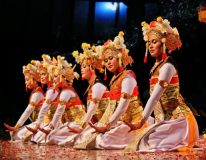What is the relationship between form and content and how has been affected by the advent of the Internet and the growth of web
publishing.
New forms of web publishing have enabled form
and content to be published by amateur writers who are now very easily able to
participate in the creation of online content. Recent influences to form and content are the cause of an upsurge in writing that
has made significant changes to the way in which we now communicate.
I propose
that these changes are a natural evolution in the form and content of writing and
act as a catalyst to new literacies to the point where we are on the verge of a
writing renaissance.
I refer to content as the ideas or information and the
form being the shape or structure of the content and how it is presented. Content
can be expressed in many forms – a message, essay, poem, script, tweet, letter
or post are all examples. Form and content do not stand alone as Paul de Mann
literary theorist points out- form and content have a mutual relationship, the
content actually determines form and form determines the content (Smith, 2012).
The ubiquitous
use of the Internet has, since its inception altered form and content most
noticeably in the way we speak, use language, and express our identity. Online
form and content varies widely from brief messages on twitter, to personal
revelations and self- expression in diary format to pictorial narratives on social
media, e- books and every genre in-between and is commonly called user
generated content (Anderson, 2007)
The nature
of user generated content is that there is no little difference between public
and private as all content is easily copied, can be retrieved at any time and
lasts forever. Therefore all individual content across multiple platforms collectively
creates our unique web footprint and identity. Consideration of our public and
private identity or voice is required to decide whether we choose to be one
person privately and professionally online or whether we attempt to hide our
identity behind an avatar or pseudonym. One’s
online presence should reflect the nature of the identity we want to present to
the world (Rettberg, 2008)

In the late 1990’s web
publishing saw the development and introduction of software that enabled
self-publishers to post content to the Internet without being skilled in
writing the necessary code (Blood, 2002) These early forms of self- publishing
were originally called we-blogs. Technological advancements have since
developed that allow self-publishers to easily set up a format for the writing of
content called an “a blog”. The writer
called a “blogger” adds content in their chosen style with some clearly defined
characteristics. Each page of content - termed “a post” appears in reverse
chronological order with the latest narrative visible on the opening page. In
my Tickled Pink blog (TP) I designed my posts to have a timeline so that as
each new post appears it adds a sample text and visual snippet to attract
attention with the hope of getting viewers to continue to read. The content of
a blog post in the past would only be found in professional publications but
the Internet has enabled content to be distributed by an amateur writer like
myself who may gain popularity and regular readership by engaging successfully
with their audience.
Our role as an audience or
consumer of information and media has also changed. The new styles and forms of
writing allow one to become at once the producer and the audience, the author
and the reader of content in its diversely different forms moving from a “one
to many broadcasting model” to a “many to many conversation” (Shirky, 2009)
It is the interactive
functionality of hyperlinks that allow the reader to message or comment that
changes the role of the audience to become participatory. This is the key
difference in written content on the Internet as compared to traditional
publishing. The linking of content increases speed of access to information and
acts as a filter to disperse the content to a wider audience (Blood, 2002). The hyperlinks are used
throughout to enable your chosen news-feeds, social media, and bookmarking sites
to be subscribed to for automatic updates. As well links provide quick referral
to other sites as a way to verify information or add a certain emphasis to
specific content that becomes mutually beneficial for both the viewer and
author. It is as if someone had pre-surfed the Internet for you and prevented a
laborious search for your topic of interest (Blood, 2002). The more forms of
content that are linked to social media applications and the more hyperlinks to
other sites the more traffic will be driven back. There is an added advantage here
because the Web 2.0 applications are self-perpetuating and are enhanced the
more they are used. My own experience verifies the benefits of linking, sharing
and tagging content as once TP was linked to social media my pageviews jumped
from approximately 10 visits to 38 – 40 per day.
The conversational nature of online
content is clearly demonstrated with Twitter because the structure of this
social media platform disperses the conversations throughout the entire network
as many people can be discussing a specific topic at once. This has been
described by academics as “being surrounded by the conversation” we may be
uninvolved directly but able to be peripherally aware of the stream of
conversations (boyd, Golder, Lotan, 2010)
The form and content of
online writing can be considered a new form of literacy (Gleason, 2012) as Alexandre
Dumas called his daily chronicles - jour par jour, heure par heure or “hour by
hour, day by day” (Rettberg, 2008) Similarly our modern day content chronicles
the daily lives of millions, hour by hour and day by day although now one can build
relationships with readers, tag content, share, communicate, collaborate online
and crowd-source information. Unlike in Dumas’s 19th century our
chronicles have become conversational where ideas are trialled, discussions ensue
and comments are made. Likewise the brevity of twitter allows fast-paced
conversations to be produced, consumed and shared in seconds with little effort
needed to reach a widely dispersed audience (boyd, Golder, Lotan, 2010)
Content can be added to web based formats in any style of choice -informative, sarcastic, humorous or personal
but amateur in nature and reflecting our own voice. I commented to the author
of the design seeds blog to complement her on an inspiring design website. The author
replied creating a line of connection and opening a conversation that could be developed
over time and is not possible in traditional platforms. Comments remain accessible
on websites and twitter to search through or retweet and add value in verifying
what the author has written or to aid in clarity and scope of information.
I also commented to add value to a web design site in reference to
colour adding information about trends and forecasting. Similarly I replied to an
online news article about the Perth Colour Run after reading a story of a Perth
bus company refusing to allow passengers to board the bus if they were still
covered in bright coloured powder from the fun run (TP, 2013). The opportunity to comment and reply to blog
posts develops participation, involvement in the public voice and gatekeeping
of the news (Newman, 2009)
Self-expression and self-discovery is an important motivator for
bloggers in the phenomenon of self-publishing and the amateur nature of blogs is
the blogs own appeal. Rebecca Blood states and I concur with her from my own
experience that until starting to write the content of her blog she did not
know that she was interested in her topic so the writing of the blog became a
self fulfilling revelation (Blood, 2006)
Responsive design and mobile devices have also had huge impact to
the form and content of news and information. The ever-present use of these devices
and the speed of communication that they allow creates the ability to seize eyewitness
accounts of news as it happens.
Sometimes an amateur writer or bystander may become a citizen journalist
by being first on the scene and hence able to deliver news content to services
immediately via social media options such as twitter or SMS.
In addition
to twitter and blogging there are many forms of writing content through Web 2.0
tools and other social media. The following remarkable statistics demonstrate
just how much content we are writing on a daily basis. Collectively worldwide we
are reported to send 294
billion emails worldwide every day (digital buzz, 2013), 58 million
tweets, 6 billion SMS as well as writing 2 million blog posts and 2 million
different people will visit facebook in one day (Pingdom, 2013).
The
magnitude of our Internet and social media use is staggering and has altered the
natural evolution of language with some interesting occurrences to the way we write
and use language. These developments are sometimes considered a negative due to
fear of the dissolving of grammar (Abrams, 2010) poor
proficiency of written content, overuse of acronyms, abbreviated text, overuse
of lower case and prevalence of shortened sentence and paragraph structure or
hijacking of existing words as well as a profusion of swapping nouns to verbs
(Kleinman, 2010). It is also thought that Internet use may threaten the
existence of minority languages (Monajemi, 2002) such as Sanskrit or the
identity of oppressed communities and nations I argue that these claims are
kneejerk reactions to new phenomenon and the changes seen to form, content and
language are positive aspects of the evolution of language (Sawers, 2010).
Furthermore because of the
way we now communicate people from different countries are able to link directly
with one another enhancing language acquisition. English dominates as a second
language at a ratio of 3:1 with non-native speakers (Criterion, 2012) and it is
predicted that by 2015 there will be more English spoken by Chinese than in
actual English speaking countries (Crouch, 2011)
I argue therefore that the
Internet has not caused negative affects on form and content. Moreover it has
provided new platforms that are conducive to bridging connections, aiding human
contact and building a sense of community for users (Straubhaar, 2013)
The
proliferation and ease of use of web publishing platforms does however present
a dilemma because there is so much choice, diversity and speed of retrieval of
online content. The question arises- how do we gain the viewer’s attention to
ensure they read our content? This cannot be solved by out-dated modes of
problem- solving; a new paradigm of thinking is needed to look to the
intangible aspects of information that will add value for the viewer. These attributes Kevin Kelly has termed
“generative value” - the uniqueness or
niche value that cannot be copied or reproduced in fact should be nurtured and
cultivated (Kelly, 2009). Generative value can be added by responding
quickly, providing content in a form that is personalised to a particular
audience that will also foster and build relationships. Furthermore by simplifying
or interpreting content for the viewer, by offering a seal of authenticity and
providing ease of flexible access. Also important is that our content can be found
easily by making one’s site or post visible to the niche audience you are
seeking and to provide your audience an opportunity to voluntarily support the
content of their choice (Kelly, 2009). These are in the main ethical (Blood, 2000) (Blood, Weblog ethics, 2002)attributes or
old-fashioned intangible values that if used successfully create engaging
content for the reader that becomes a new style of modern journalism.
In
reflection of my own writing I am inspired to contribute well-written content
of relevance and meaning to the chosen niche audience and easily able to
publish content regularly at little cost. The writing of TP allows me to be
involved in the public sphere and provides an opportunity to connect and
collaborate within my area of expertise. As an amateur writer I do not dispel
the professional but search them out for validation, experienced viewpoints and
inspiration. The weekly writing of a blog
or interaction on social media is an enjoyable form of self-discovery
and creative expression that develops interest in a diverse range of ideas and
is motivated by the sheer love of doing it. It is not a threat to either
language or traditional publishing because we remain amateurs and maintain a
small niche audience. As Shirky states it is the participation in the
conversation that is its own reward (Shirky, 2009)
 To conclude, whatever form the writing of new content takes -
tweets in short code, cryptic text speak, chat room dialogue, business emails, technical
websites, travel posts or personal diary entries in blogs and social media
there is no doubt that we are all writing far more content than we ever did prior
to the Internet. As language is dynamic and constantly taking on new shape and
style it does not matter that these forms are different to the traditional
forms of writing. I propose therefore that there is no threat to language depletion but
rather our prolific writing of online content is a catalyst for the evolution
of language and publishing towards a post-print era, a renaissance of a writing
era that is more conversational in nature than the past written culture
(Shirky, 2009)
To conclude, whatever form the writing of new content takes -
tweets in short code, cryptic text speak, chat room dialogue, business emails, technical
websites, travel posts or personal diary entries in blogs and social media
there is no doubt that we are all writing far more content than we ever did prior
to the Internet. As language is dynamic and constantly taking on new shape and
style it does not matter that these forms are different to the traditional
forms of writing. I propose therefore that there is no threat to language depletion but
rather our prolific writing of online content is a catalyst for the evolution
of language and publishing towards a post-print era, a renaissance of a writing
era that is more conversational in nature than the past written culture
(Shirky, 2009)
For works cited and refernces see tab on home page
Cheers Diyu



















